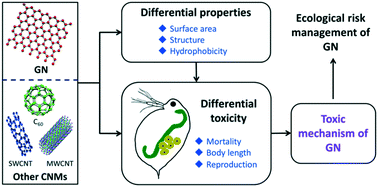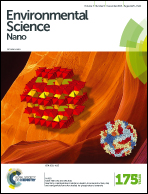The mechanism of chronic toxicity to Daphnia magna induced by graphene suspended in a water column†
Abstract
Graphene (GN) is widely used in various applications. Thus, it is at risk of being released into aquatic environments. However, its toxicity to aquatic organisms, especially chronic toxicity, has not become a serious concern. This study assessed the acute and chronic toxicity of GN to Daphnia magna by comparing the toxic effects of GN with those of three other typical carbon nanomaterials (CNMs), fullerene (C60), single-walled carbon nanotube (SWCNT), and multi-walled carbon nanotube (MWCNT). Results indicated that GN promoted the growth and reproduction of daphnids at low concentrations, similar to the other three CNMs. This may be due to the adsorption of nutrient elements in the exposure medium by the CNMs with high surface areas, which increased the ingestion of nutrient elements by daphnids. At high concentrations, the four CNMs inhibited the growth and reproduction of the daphnids to different extents. The toxicity of GN was significantly higher than that of the other three CNMs, although GN bioaccumulation in D. magna was relatively lower. The special structure and substantial adsorption on the daphnids' surface may mainly explain the higher toxicity of GN to daphnids.



 Please wait while we load your content...
Please wait while we load your content...